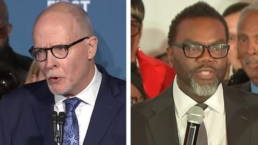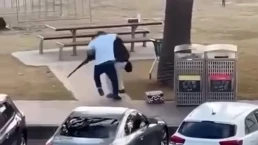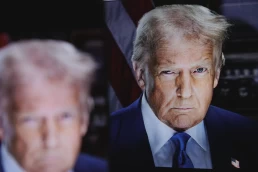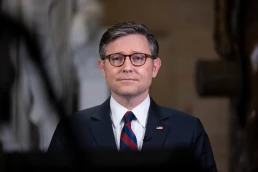You have a choice in Chicago’s Mayoral election
By Delmarie Cobb, Chicago Color
“The business community that’s supporting me has also supported Mayor Daley. Many of them have given money to Rahm Emanuel, and many of them have given money to Lori Lightfoot,” responded Paul Vallas, during a mayoral runoff debate on FOX 32.

And therein lies the problem. These are the same people who supported Mayor Richard M. Daley and Paul Vallas as they corporatized Chicago Public Schools. These are the same people who supported Emanuel’s closing of 50 schools after more than a decade of starving neighborhood schools by siphoning money to charter schools, contract schools and Tax Increment Financing Districts.
Since 1985, the policies that Mayors Daley, Emanuel and their Chicago Public Schools CEO’s Paul Vallas and Arne Duncan embraced and foisted on Chicago’s Black residents during their tenures have displaced families, replaced families and decimated communities.
CPS
CHARTER SCHOOLS
Charter schools are publicly funded, but privately managed. As Chicago’s first CEO of CPS, Vallas opened 15 charter schools. Daley moved Vallas from his position as the city’s budget director to run CPS. He was the first in a line of noneducators that Daley appointed to run CPS as a business, not an institution of learning, after he took control of the nation’s third largest school system.
Michael Milkie founded Noble Network of Charter Schools, the city’s largest charter school network. The network consists of 18 campuses with around 13,000 mostly Black and Latino students.
A 2020 audit shows the former teacher brought in nearly $200 million, the vast majority from tuition payments from CPS. The network also raised more than $9 million from some of the state’s wealthiest residents, many of them Vallas donors.
In addition to its fundraising prowess, it was reported in 2012 the charter school network had raised nearly $200,000 from disciplinary fees and nearly $400,000 over a four-year period.
CONTRACT SCHOOLS
Although Vallas created contract “turnaround” schools, it was former U.S. Education Secretary Arne Duncan, who succeeded Vallas as CEO of CPS, who implemented the idea. He joined forces in 2006 with Martin Koldyke of Nuveen Investments. Koldyke founded the Academy for Urban School Leadership, a nonprofit school management organization, whose mission was to transform schools CPS labeled as “struggling with poor academic records.” Until 2021, it managed 31 Chicago Public Schools serving more than 16,000 students. It boasted graduating over 1,000 teachers from the AUSL Chicago Teacher Residency.
Turnarounds meant firing entire school staffs and having them reapply for their positions under new leadership. These hostile takeovers decimated the ranks of Black teachers on the South and West sides. According to the University of Illinois at Chicago, “AUSL schools have a higher average proportion of white teachers compared to CPS overall and substantially lower number of years of teaching experience.”
Just as with CPS, budgets for AUSL schools are on a per-student basis. Until 2019, CPS reportedly was spending between $2 million and $5 million in salaries for administrators to oversee the network.
According to a 2012 Chicago Tribune article, “Most of AUSL turnarounds scored below CPS averages on the percentage of students meeting or exceeding state benchmarks on standardized testing. Those schools that beat district averages have been accused of pushing out their lowest-performing students or those with discipline problems to artificially inflate their test scores.”
Another school reform debacle was the $20 million no-bid contract given to SUPES Academy by Barbara Byrd-Bennett. The former CEO of CPS had worked as a coach for the Wilmette-based, for-profit SUPES Academy before Emanuel hired her at CPS.
The SUPES contract was to provide comprehensive principal professional development. Teachers who were required to attend the trainings, however, complained the sessions were too basic and were led by outside instructors who knew nothing about the problems principals face in Chicago.
The SUPES contract was the beginning of the end for Byrd-Bennett, who was sentenced to 4 ½ years in federal prison for steering contracts in exchange for money and gifts.
CPS has been under mayoral control since 1995. During that time, the student body, which is mostly Black, has been used as a commodity for mayoral friends and the well connected. These are the same wealthy, corporate tycoons donating to Vallas.
TIF’s
Vallas says he’ll take the TIF surplus to “reprogram” $28 million in city spending. Tax Increment Financing was started by Mayor Harold Washington as an incentive to developers to build in blighted communities. What Mayor Washington considered “blighted” doesn’t compare to the current devastation that exists in many Black communities throughout the city’s South and West sides.
Under Daley, and continued by Emanuel, TIF’s became their personal slush fund providing hundreds of millions of dollars in property tax revenue for public buildings, street repairs and other vanity projects.
TIF districts freeze the amount of money that goes to schools, parks, and other taxing bodies for 23 years. Any increase in tax revenue generated by the district during that period is funneled into a TIF fund that can be used for
redevelopment projects in that area. During Daley’s tenure, he built 11 new police stations, renovated or built 55 libraries, as well as new fire stations and schools. According to ABC 7, in the mayor’s 22 years, well over a billion dollars worth of construction took place, much of it made possible by tax increment financing.
What do these public buildings that were a part of Daley’s “neighborhood alive” program have in common? They don’t pay taxes. What these projects did, however, was provide mayoral friends and the well connected with a steady stream of building and infrastructure contracts.
According to a 2000 Chicago Tribune investigation, “The politically connected firm that is wrapping Chicago in “wrought-iron” fencing–profiting from Mayor Richard Daley’s most visible initiative–has been allowed by city officials to regularly charge prices far higher than those in its contract.” From 1989 to 2000, G.F. Structures was paid $55 million for Daley’s favorite fences.
The most recent misuse of TIF money is the $2.4 billion given to the developers of Project 78 in the South Loop and Lincoln Yards in Lincoln Park. It was Emanuel’s last official act as mayor.
In 2022, Chicago’s TIF districts produced more than $1 billion. So, the idea that Vallas proposes to use TIF surpluses to fill other budget needs is more of the same. If TIF money were used as intended, any surplus would go toward the needed investment and continued rebuilding of blighted communities.
VIDEO POKER
I call video poker, “the casino next door.” Vallas proposes to lift Chicago’s ban on video poker to fill any budget shortfalls. Called the “crack cocaine” of gambling, there’s a reason video poker isn’t legal in Chicago. Based on the state’s criteria–bars, restaurants, fraternal organizations, truck stops and gas stations–can have at least six terminals per location.
That would be equivalent to operating a dozen casinos in the city of Chicago or 50,000 video poker machines. According to the state’s projections in 2009, when Gov. Pat Quinn signed the Video Gaming Act into law, Chicagoans will lose over $800 million every year playing video poker. For this, the city will receive only $30 million as a local share but will also be responsible for funding associated law enforcement costs.
According to U.S. Department of Justice and Civil Rights Division, in its report following the murder of Laquan McDonald, the median household income in Chicago is $48,522, which is below the national average of $53,889. Twenty-two percent of the City’s residents live below the federal poverty threshold. Black and Latino Chicago residents are disproportionately poor when compared to white Chicago residents. Approximately 35% of Black residents and 25% of Latinos live below the poverty line, compared to less than 11% of white residents. The mean household income for Black residents is $30,400, as opposed to $61,500 for whites.
Illinois municipalities that reflect Chicago’s Black individual median income choose to have video gaming, while those with an average income of $60,000 and above opted out. Video poker machines are designed for patrons to play to “extinction.” Needless to say, the communities with the least will play the most. It doesn’t take a genius to figure out that public safety in these communities will be up for grabs.
In another report by the Justice Dept., following the killing of Michael Brown by a Ferguson, Missouri, police officer, it concluded Black residents are routinely targeted by government entities as a source of generating revenue. Whether it’s the lottery, speed cameras, traffic stops, walking, bicycling, property taxes or marijuana-related offenses the regressive contributions to the city’s coffers by Black Chicagoans exceeds our population by double and triple percentages.
On April 4, we have a choice. Black Chicagoans can choose to continue being a commodity for other people to get rich by voting for Paul Vallas and the public policies of the past or we can choose to invest in people. Our communities have been devastated over the 35 years following Mayor Harold Washington’s death. Cook County Commissioner Brandon Johnson would be the first progressive mayor since Washington.
We have 35 years of evidence of what Chicago’s well-connected business community thinks of us. The fact that many of the same people who supported Daley and Emanuel are supporting Vallas should be all the reason we need to vote for reform and progress.
It shouldn’t be lost on anyone that April 4 is the 55th observance of Rev. Martin Luther King’s assassination. In his last book, Where Do We Go From Here: Chaos or Community?, Rev. King explains his definition of Black Power:
“Black Power, in its broad and positive meaning, is a call to black people to amass the political and economic strength to achieve their legitimate goals. No one can deny that the Negro is in dire need of this kind of legitimate power. Indeed, one of the great problems that the Negro confronts is his lack of power. From the old plantations of the South to the newer ghettos of the North, the Negro has been confined to a life of voicelessness and powerlessness. …The plantation and the ghetto were created by those who had power both to confine those who had no power and to perpetuate their powerlessness. The problem of transforming the ghetto is, therefore, a problem of power – a confrontation between the forces of power demanding change and the forces of power dedicated to preserving the status quo.”
I’m encouraging Black Chicagoans to vote no to preserving the status quo. What better way to honor Rev. King on Election Day than by voting for Brandon Johnson and change?
Recent Posts
Democratic Governance Depends On Stable, Affordable Housing
December 16, 2025
Take Action Now A population that cannot afford to stay in one place cannot build civic associations, and a society without civic associations cannot…
The Lobby Is Milking The Bondi Beach Attack To Silence Critics Of Israel’s Genocide
December 16, 2025
Take Action Now It is years of dedicated work by the Israel lobby that has ensured the mass murder of Palestinians is viewed by governments, the…
White House Refuses To Rule Out Summary Executions Of People On Its Secret Domestic Terrorist List
December 15, 2025
Take Action Now The Trump administration ignored questions about whether it would order the killings of those on its NSPM-7 list — even while…
Koch Network Fuels Republican Push To Kill ACA Subsidies
December 15, 2025
Take Action Now As millions face higher premiums, Koch‑funded groups are pressuring Republicans to oppose Obamacare subsidy extensions.By Donald…




